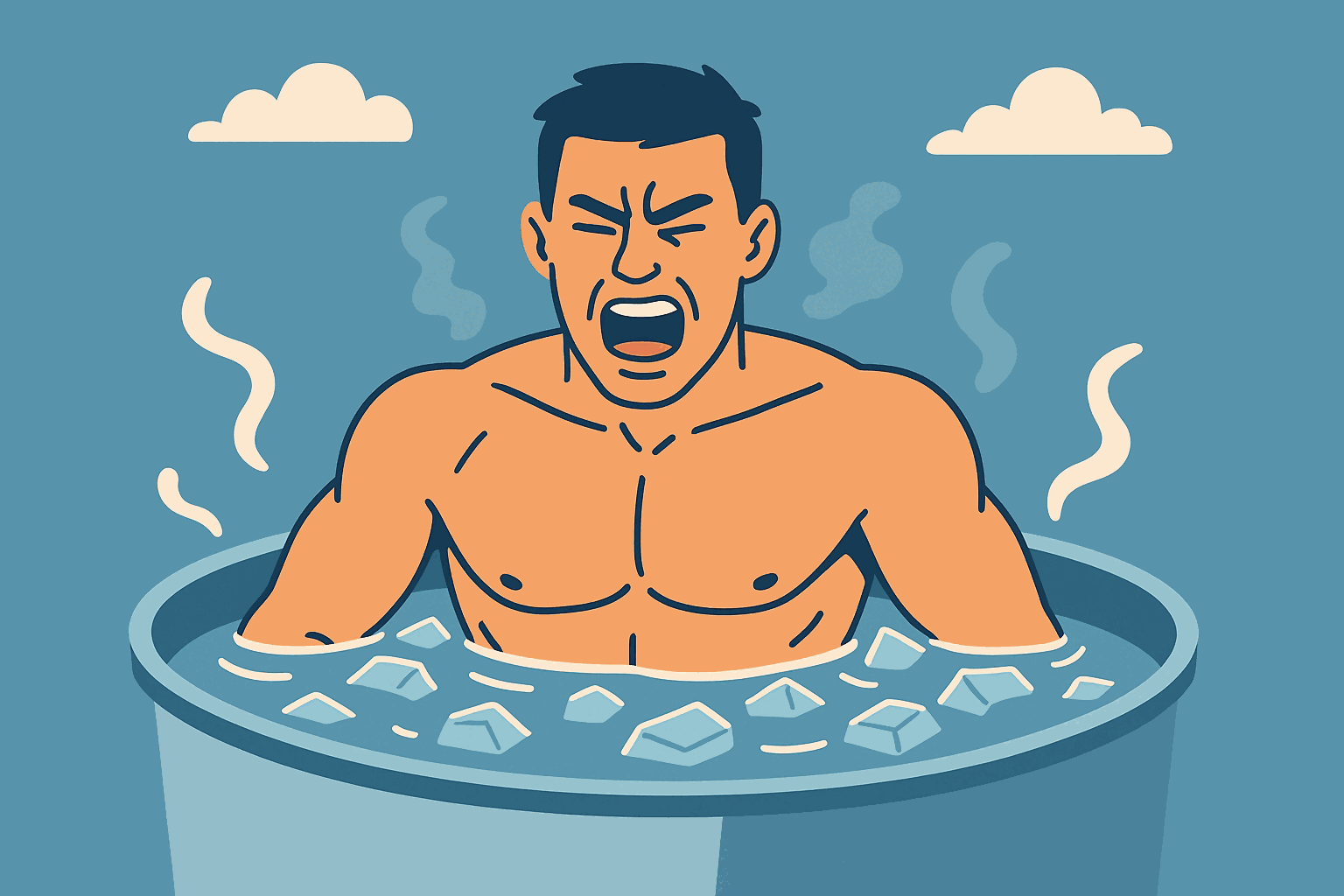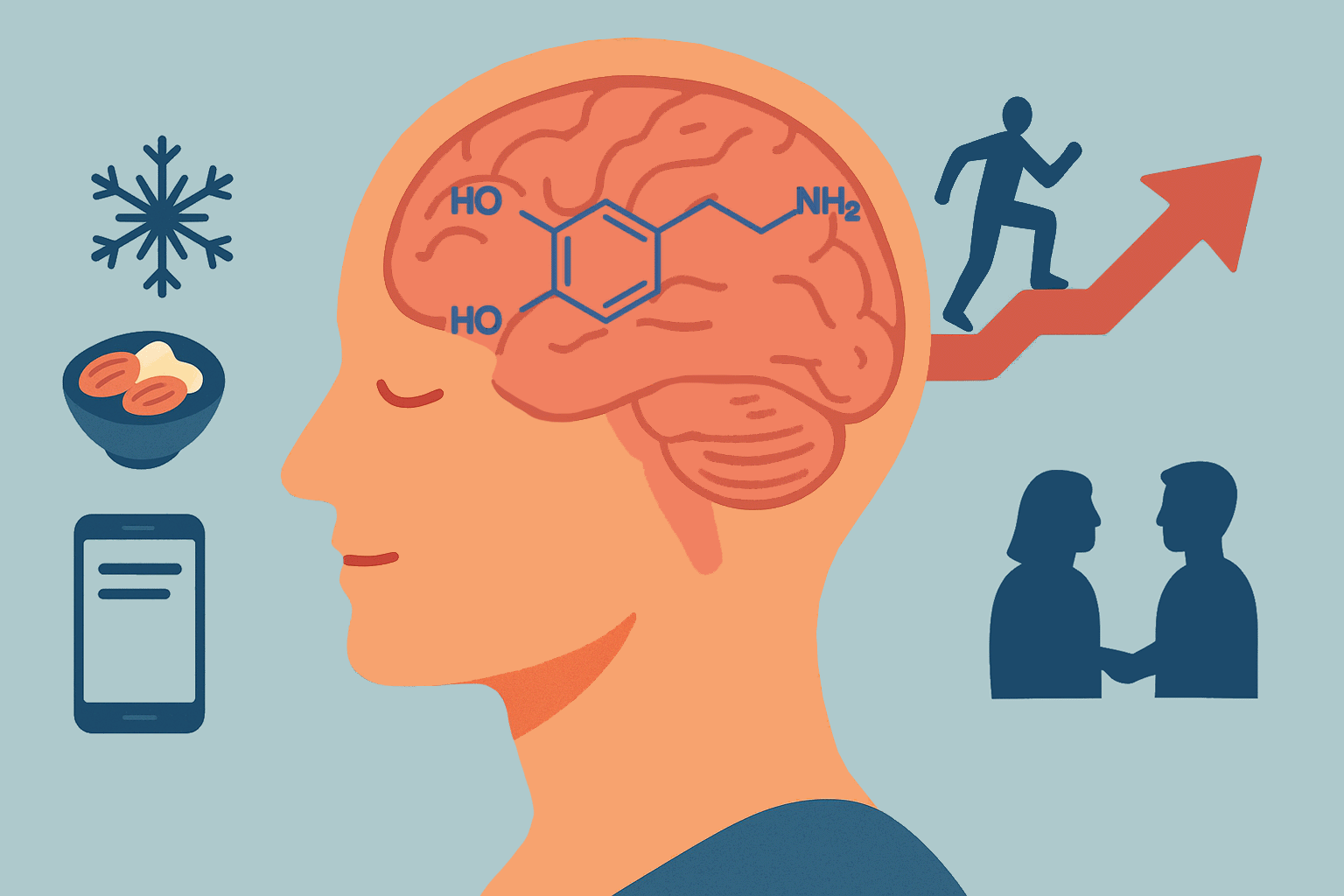
The Chilling Truth About Cold Exposure: Benefits, Risks & Muscle Growth Impact
- Marcus Reed
- Health , Fitness , Wellness , Science
- May 4, 2025
Table of Contents
Cold Exposure: A Hot Topic with Cool Effects (and Risks)
From 19th-century hydrotherapy pioneers like Vincent Priessnitz to modern biohackers plunging into icy baths, the practice of deliberately exposing the body to cold has a long history and surging contemporary interest. Proponents claim benefits ranging from enhanced mood and energy to improved recovery. But what does the science actually say about cold exposure, particularly concerning its effects on mental well-being and muscle development? And are there hidden dangers to consider? Let’s dive in.
The Mental Boost: Cold Exposure and Dopamine
Feeling invigorated after a cold shower isn’t just in your head. Research suggests that cold exposure can significantly impact neurotransmitter levels, particularly dopamine.
- Dopamine Dynamics: Dopamine is crucial for motivation, focus, and feelings of pleasure. Studies indicate that immersing the body in cold water can trigger a substantial, albeit temporary, increase in dopamine release. Some research suggests cold water immersion can lead to a prolonged elevation of dopamine levels, potentially lasting for several hours post-exposure. This effect is thought to contribute to the improved concentration and alertness reported by many practitioners.
- Mood and Emotional Resilience: Work at institutions like Radboud University has explored how regular, controlled cold exposure might help stabilize emotional states and potentially alleviate symptoms of anxiety and depression. This adaptation process, sometimes linked to the concept of hormesis (where mild stress induces beneficial adaptations), could explain the popularity of practices like winter swimming for combating seasonal affective disorder and generally improving mood. Research led by experts like Mark Harper further supports the potential mood-lifting effects.
While more research is needed, the existing evidence points towards cold exposure as a potential tool for enhancing mental well-being through neurochemical shifts.
Cold Therapy and Muscle Growth: A Chilling Effect on Gains?
While cold water immersion (CWI) is often used by athletes hoping to speed up recovery and reduce muscle soreness (DOMS), its impact on muscle growth (hypertrophy) after strength training is a critical consideration. The science here suggests a potential conflict.
The primary physiological responses to cold water that impact muscle adaptation include:
- Vasoconstriction: Cold causes blood vessels near the skin and in the extremities to narrow. This reduces blood flow to the muscles exercised, potentially limiting the delivery of essential nutrients and signaling molecules needed for repair and growth immediately post-workout.
- Suppression of Inflammatory and Growth Pathways: The inflammatory response after exercise, while contributing to soreness, also plays a role in signaling muscle repair and adaptation. Cold immersion significantly dampens this response. Furthermore, key molecular pathways responsible for muscle protein synthesis, like the mTOR pathway, appear to be blunted by CWI following resistance exercise.
- Reduced Immune Cell Activity: Immune cells (like macrophages) are involved in clearing damaged tissue and releasing growth factors after strenuous exercise. Reduced blood flow and dampened inflammation may decrease their activity in the muscle tissue.
What the Studies Show:
Multiple studies investigating the effects of CWI after resistance training have yielded consistent findings:
- Regular use of cold water immersion after strength workouts designed for muscle growth often leads to smaller gains in muscle mass and strength compared to passive recovery or other methods like active recovery.
- The molecular signals that drive muscle protein synthesis and hypertrophy are demonstrably reduced when cold therapy is applied shortly after a resistance training session. A key study highlighting these blunted pathways is available here.
When Might Cold Therapy Be Beneficial for Athletes?
Despite the potential drawbacks for muscle growth, CWI isn’t without its uses:
- Reducing Muscle Soreness (DOMS): It can effectively reduce the perception of soreness, which might be beneficial during intense competition periods or when rapid recovery of performance (not necessarily adaptation) is paramount.
- Managing Inflammation After Intense Endurance Events: Following prolonged, high-intensity events like marathons, CWI might help manage excessive inflammation and swelling.
- Injury Rehabilitation: Under professional guidance, cold therapy is a standard tool for reducing swelling and pain associated with acute soft tissue injuries.
Practical Takeaways for Your Goals
- Prioritizing Muscle Growth? If maximizing muscle mass and strength gains from resistance training is your primary goal, avoid regular cold water immersion immediately after your workouts. Focus instead on evidence-based recovery strategies like adequate protein intake, sufficient sleep, and potentially active recovery (light movement).
- Using Cold for Other Reasons? If using cold exposure for mood enhancement or general well-being, consider timing it away from your strength training sessions (e.g., morning cold showers on non-training days or much later in the day).
- Listen to Your Body & Be Safe: Introduce cold exposure gradually. Never push yourself into extreme conditions, especially without supervision or prior experience.
CRITICAL WARNING: The Dangers of Sudden Cold Water Immersion
While gradual cold exposure can have benefits, sudden immersion, especially involving the face and head, carries significant risks, even for young, healthy individuals.
Do NOT plunge headfirst into cold water. Here’s why:
- The Mammalian Diving Reflex: Immersing your face in cold water triggers a powerful physiological response known as the diving reflex. This involves:
- Bradycardia: A sudden slowing of the heart rate.
- Peripheral Vasoconstriction: Extreme narrowing of blood vessels in the limbs to redirect blood flow to vital organs.
- Increased Blood Pressure: The combination significantly raises central arterial pressure.
- Risk of Cerebrovascular Events: This sudden spike in blood pressure can be dangerous. As documented in case studies like this one published in Sports Health, facial immersion in ice water can trigger intracerebral hemorrhage (stroke). The trigeminal nerve (particularly branches supplying the face) and the vagus nerve are key mediators of this reflex.
- Cold Weather Associations: Research suggests colder temperatures are statistically associated with an increased risk of certain types of stroke (aneurysmal subarachnoid hemorrhage), potentially due to blood pressure fluctuations.
- Hypothermia: Prolonged exposure to cold water can lead to a dangerous drop in core body temperature (hypothermia), impairing physical and mental function and potentially becoming life-threatening.
- Cold Shock Response: Sudden immersion in cold water can also cause an involuntary gasp reflex and hyperventilation, increasing the risk of drowning, especially in open water.
In Conclusion:
Cold exposure offers intriguing potential benefits for mood and alertness via dopamine modulation. However, when it comes to building muscle, current evidence strongly suggests that post-workout ice baths are counterproductive, blunting the very adaptations you train for. Most importantly, the practice carries real risks, especially with sudden immersion involving the face. Approach cold exposure cautiously, understand the science, prioritize safety, and align your recovery methods with your specific fitness goals.
Disclaimer: This article is for informational purposes only and does not constitute medical advice. Always consult with a qualified healthcare professional before starting any new health or fitness regimen, especially one involving cold exposure.
Disclaimer
The information provided on BioBrain is intended for educational purposes only and is grounded in science, common sense, and evidence-based medicine. It is not a substitute for professional medical advice, diagnosis, or treatment. Always consult a qualified healthcare provider before making significant changes to your diet, exercise routine, or overall health plan.
Tags :
- Cold therapy
- Cold exposure
- Ice bath
- Cold shower
- Cryotherapy
- Muscle growth
- Hypertrophy
- Dopamine
- Mood enhancement
- Vasoconstriction
- Diving reflex
- Health risks
- Recovery
